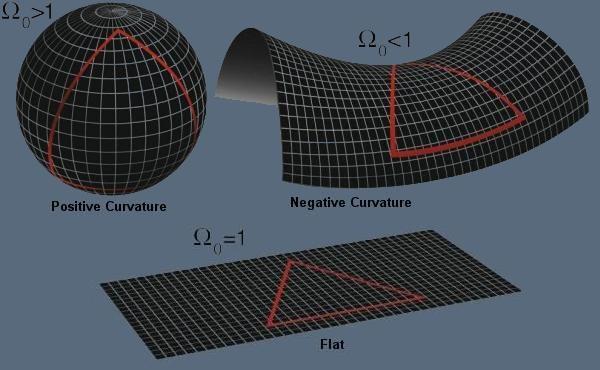Astronomy & Cosmology
-
The End of the Universe
The ultimate fate of the Universe depends crucially on its density and shape. It could be either positively or negatively curved, or flat. As we stated above, Omega is used to express the ratio of the actual density of the Universe to the critical density. If Omega is more than 1, then the universe is closed. If it is negative, then the universe is open. If it is exactly equal to 1, the universe is flat. Positive curvature, Omega is more than 1, implies a density greater than the critical density, so the Universe would eventually collapse on itself in something like the big crunch. Flat curvature, Omega is exactly equal to 1, implies a density equal to the critical density, so the Universe would continue expanding forever at a slower and slower rate, taking, in theory at least, an infinite amount of time to come to a stop, but never collapsing. Negative curvature, Omega is negative, implies a density less than the critical density, so the Universe would continue expanding forever at an increasing rate. The WMAP project data implies that the Universe is flat to within about 1% to 2%, but that the rate of the expansion is accelerating. There is other observational evidence for this accelerated expansion, and this all points towards the existence of some form of energy that has negative pressure, and that this may override the affect of gravity.
Consider a right-angled triangle. In a flat universe, the angles add up to exactly 180 degrees. In a positively curved universe, however, the angles add up to more than 180 degrees, while In a negatively curved universe, the angles add up to less than 180 degrees. This is illustrated in the diagram below from NASA.
Consider a right-angled triangle. In a flat universe, the angles add up to exactly 180 degrees. In a positively curved universe, however, the angles add up to more than 180 degrees, while In a negatively curved universe, the angles add up to less than 180 degrees. This is illustrated in the diagram below from NASA.
Shape & Density



